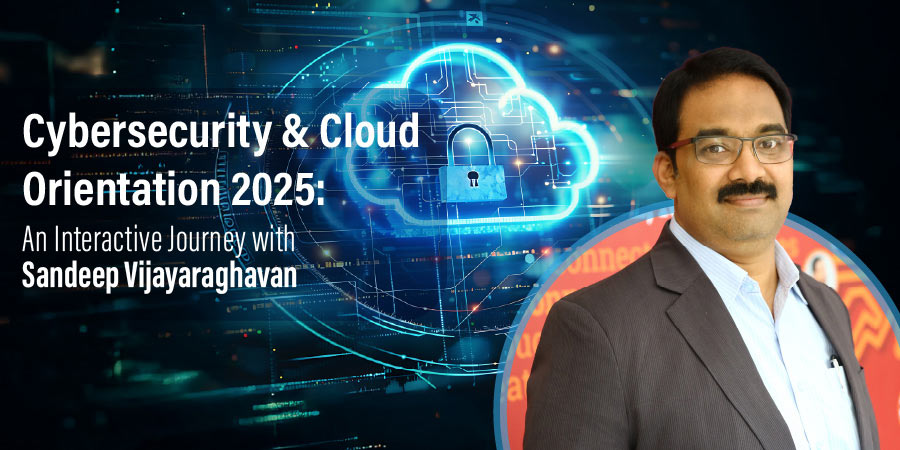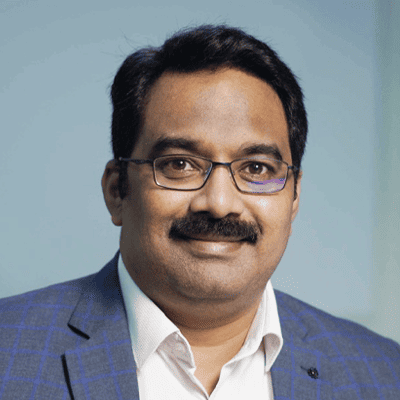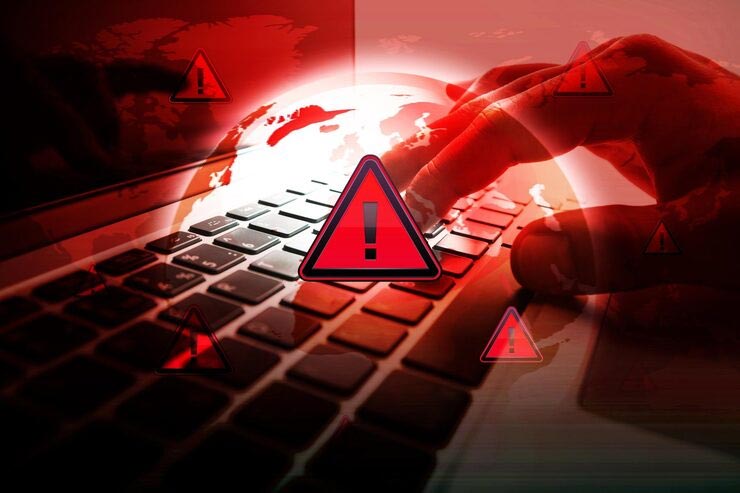Cybersecurity & Cloud Orientation 2025

In an era where cyberattacks are projected to cost the global economy $10.5 trillion annually by 2025 (Cybersecurity Ventures), the urgency to develop skilled cybersecurity leaders has never been greater.
To address this demand, the REVA Academy for Corporate Excellence (RACE) organized a special orientation program for aspiring learners who had registered to explore the M.Sc. in Cybersecurity and Cloud Architecture & Security. The session was designed not merely as an introduction, but as an opportunity for participants to experience the depth, rigor, and relevance of the program before formally stepping into it.

Led by Mr. Sandeep Vijayaraghavan (EVP – Cyber Security & Cloud Service – Terralogic Inc.), the orientation combined expert insights with interactive discussions, helping participants connect global cybersecurity trends with real-world scenarios.
👉 Read on to discover the key insights, discussions, and takeaways from this interactive orientation.
Learning from Breaches: Participant Stories
1. The Ransomware Reality Check
One participant recalled a global ransomware outbreak that crippled operations across regions. The attack locked critical systems, forcing teams to shut down data centers and switch to manual recovery. It showed that even mature organizations can fail without proactive threat hunting and incident response drills.

2. When Credential Stuffing Brought Systems Down
Another participant shared how stolen credentials from unrelated sites were used to infiltrate systems. Despite access controls, attackers exploited reused passwords to escalate privileges. The breach reinforced the need for MFA, employee awareness, and continuous identity monitoring.

3. The Insider Threat Nobody Expected
One story revealed the hidden danger within organizations. A trusted insider caused a data leak leading to damage. Firewalls couldn’t stop what came from inside — sparking a talk on zero-trust architecture, user behavior analytics, and governance frameworks.

4. The Day a Patch Went Wrong
A participant narrated the CrowdStrike update outage where a faulty patch caused global IT chaos. Their enterprise saw system downtime across key functions, proving that operational resilience and business continuity are as crucial as attack prevention.

5. A Close Brush with Petya
The Petya ransomware attack spread rapidly through a supply chain network. Even after decryption, data integrity remained compromised. The takeaway: supply chain security and proactive patching are vital to organizational defense.

The Program as a Living Journey
Instead of walking through a dry syllabus, Sandeep described the program as a transformative journey into security maturity, where every lesson had a purpose. He invited participants to envision each module as a milestone: Threat Modelling on Azure Sentinel, attack simulations that unfold across multiple phases, electives in Governance, Compliance and DevSecOps and culminating in a capstone project that tackles real industry problems.
He didn’t mince words:
Trends, Threats, and the Future
The orientation didn’t shy away from emerging risks. The class mulled over how AI and automation are being weaponized. A recent survey revealed that 65% of organizations admitted their cybersecurity defenses are outdated and ill-equipped to face AI-enhanced threats. (Source: TechRadar)
Another sobering fact: credential theft has surged by 160% in 2025, now constituting nearly 20% of data breaches. (Source: IT Pro)
Sandeep used these numbers as more than a scare tactic — he framed them as a call to arms. As attackers scale using generative AI, defenders must become more nimble, context-aware, and purposeful in how they invest in people, processes, and tools.
Dialogue Over Doctrine
What made the orientation special was that it wasn’t a monologue — it was a conversation. Attendees from fintech debated how to secure APIs, those from production facilities asked about OT vulnerabilities, and a risk manager probed vendor onboarding standards.
One even asked: “Given our budgets, how much security is enough?” The answer was not binary. Instead, Sandeep steered the group toward risk-based prioritization — protecting the critical assets first, embracing automation, building resilience, and never treating security as an afterthought.
A Call for Commitment
As the clock ticked past scheduled hours, Sandeep closed the session with clarity: intense Saturday classes, rigorous preparation, and sustained effort would be non-negotiable. But his promise was clear:
The Wrap-Up: A Call to Lead
As the session drew to a close, the energy in the room was different from where it began. Participants weren’t simply curious learners anymore — they were aware of the responsibility that came with stepping into this program.
Sandeep Sir closed with a thought that summed up the day:
The session ended not with silence, but with buzzing conversations, exchanged contacts, and promises to continue the dialogue. Orientation wasn’t a formality — it was the first battle drill in a long campaign to shape the future of cybersecurity leadership.



